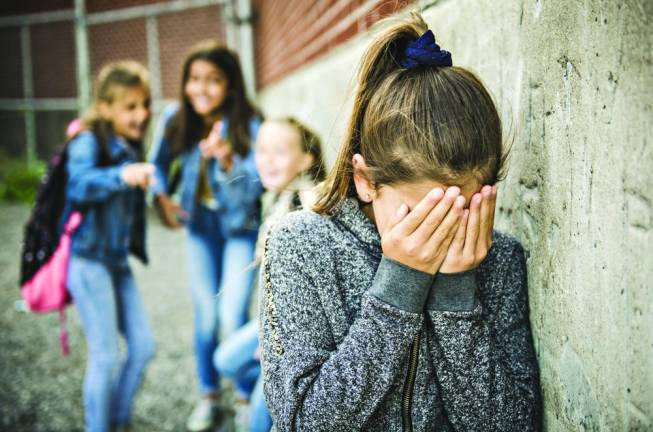Bullying

Bullying is the use of force, verbal or physical, to intimidate or dominate another person.
Bullying behavior must be aggressive and include an imbalance of power, where kids use power to control or harm others, and repetition, behavior that happens more than once or has the potential to happen more than once, StopBullying.gov says. This includes making threats, spreading rumors, attacking someone physically or verbally, and excluding someone from a group on purpose.
Three Types of Bullying
Verbal bullying is saying or writing mean things about someone. It includes teasing, name-calling, inappropriate comments, taunting or threatening someone. Social bullying or relational bullying involves hurting someone’s reputation or relationships, including leaving someone out of an activity on purpose, telling other students not to be friends with someone, spreading rumors and embarrassing someone in public.
Physical bullying involves hurting another student or their possessions, including hitting, kicking, pinching, spitting, tripping or pushing, taking or breaking someone’s things, or making mean or rude hand gestures.
Effects of Bullying
Bullying affects both the student bullying others and the child being bullied; no one wins in this situation. Kids who are bullied are reported to experience depression and anxiety, feelings of loneliness, changes in sleep and eating patterns, health complaints and decreased academic achievement. Kids who bully others are more likely to abuse drugs and alcohol, get into fights, vandalize property, drop out of school, engage in early sexual activity, have criminal convictions and be abusive toward others.
Even kids who witness bullying are affected. They are more likely to have increased use of tobacco, alcohol and other drugs; have increased mental health problems; and miss or skip school.
Responding to Bullying
It’s up to adults to stop bullying as soon as they see it. They should intervene immediately, even if it means grabbing another adult to help. Next, separate the kids involved and make sure everyone is safe. Meet any immediate medical or mental health needs while staying calm and reassuring all the kids present. Model respectful behavior whenever you intervene.
Get police or medical attention immediately if a weapon is involved or if there are threats of serious physical injury, if there are threats of hate-motivated violence, if there is serious bodily harm or sexual abuse, or if anyone is accused of an illegal act.